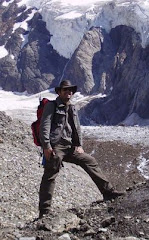Unfortunately the worst affected townships are more then 21, until now the verified victims are 150 people, thousends injured, and more then 50.000 peoples were forced to leave their houses.
It is a tragedy, and I can only express solidarity with the affected people.
Southern Italy has a long and tragic history of earthquakes. The setting between to larger continental plates (european and african) and various microplates causes highly active tectonics.
In 1783, between 5. february and 28. march the italian region of Calabria was shattered by six successive shocks, causing widespread destruction and 35.000 deaths. The administration in Naples initiated a study, collecting storys of eyewitnesses, and sending experts to evaluate the destruction. Two main items were published, the collection of the eyewitnesses story with 569 pages, and the account of the experts with 372 pages, covering observations in 150 citys and villages.
 The first map of seismicity of the mediterranean area, and a extensive research on earthquakes in Italy named „Great Neapolitan Earthquake- The First Principles of Observational Seismology", was published by the irish engineer – and self educated geologist - Robert Mallet in the year 1857. He got caugth by the subject of earthquake exploration in 1830, by a drawing in a natural science book, displaying two columns twisted by an earthquake in Calabria. He decided to study the forces able to do this to human constructions.
The first map of seismicity of the mediterranean area, and a extensive research on earthquakes in Italy named „Great Neapolitan Earthquake- The First Principles of Observational Seismology", was published by the irish engineer – and self educated geologist - Robert Mallet in the year 1857. He got caugth by the subject of earthquake exploration in 1830, by a drawing in a natural science book, displaying two columns twisted by an earthquake in Calabria. He decided to study the forces able to do this to human constructions.He noted that damages on constructions were distributed in „areas, setting out from a point of heaviest havoc. Also this epicenters were not randomly distributed, but found in „seismic belts“, surrounding the entire globe.






Keine Kommentare:
Kommentar veröffentlichen